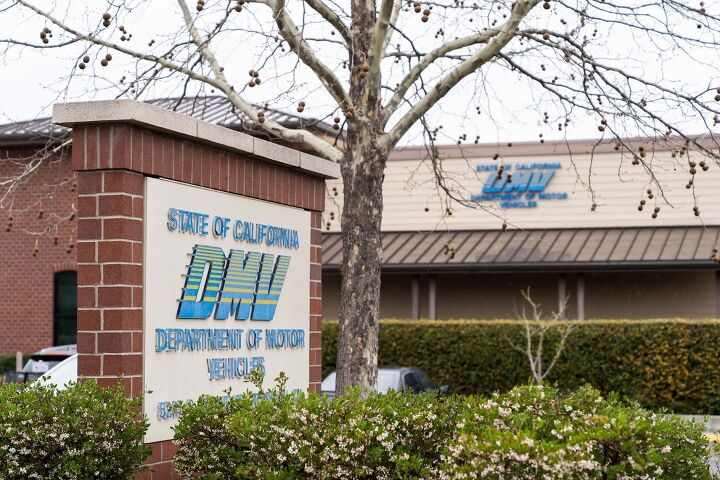What’s Required to Get a Motorcycle License?

When you’re first interested in riding, start your research, and then roll out with a plan.
The United States is a big place with tons of states, but fortunately, the motorcycle licensing rules and requirements are similar in many of them. This can be true even from largest to smallest bike states. For instance, with nearly 1 million registrations, New York tops the list for “active” motorcycles, followed closely by California and then Florida in third. On the flip side, little Delaware and Rhode Island have only about 25,000 registrations apiece. Now, among these states, in California, fledgling riders can get a “learners” permit at age 15 ½, but in Delaware the rule is 17 years old. Other states may further differ, but likely not by much.
Motorcycle.com thanks Yamaha for sponsoring this new rider series.
In our experience, six important items likely need fulfilling before you’re a fully licensed, go-anywhere-on-your-own rider. We’ve listed them below. However, first and foremost, before embarking on the process (and especially before buying a street bike), look up your state’s requirements; they may deviate from other states’ rules as to initial licensing age, what defines a learner’s permit vs. a full license, interim operating rules (i.e., restrictions) while you’re learning, and even potential displacement caps for beginners.
1. Legal Riding Age
Your state may differ, but in California where Motorcycle.com is based, a learner’s permit may be obtained by written application at age 15 1/2, and a full license (aka “motorcycle endorsement”) at 16. The difference is that, in the Golden State at least, the learner’s permit doesn’t allow riding at night, with a passenger, or on the freeway. In Europe, displacement or horsepower limits can apply for younger riders. This approach exists here too; in at least one state, the displacement of a learner’s bike (e.g., under 150cc) is required for a certain period, before graduating to bigger engines.
2. Safety Certification
Our understanding is that a Motorcycle Safety Foundation (MSF) or similar certification is not essential for everyone to obtain a motorcycle operator’s permit, but it does permit you to obtain one at younger age – say, 15 or 16 vs. 18 or older for example. Then, once you’re legally an adult, while MSF training is still quite valuable, it isn’t legally required to earn your license. Again, your state may differ – check its specific regs.
The Motorcycle Safety Foundation curriculum includes a combination of classroom and riding. To get you up on two wheels, the MSF course may provide small-displacement learner bikes for students to use; alternately, students may have one provided for them, such as by a friend or family member. Note that legally, you’re not licensed to operate a motorcycle on the street until you’ve been issued a permit by the DMV, and so, riding a motorcycle of any kind to the MSF training isn’t legally possible.
3. Parental Permission
If you’re a minor, we’re talking two different kinds of permission here. One is for permission to ride a motorcycle at all; this can be within the family and needn’t be a legal agreement or even in writing. (Although, our opinion is that permission should come with terms and conditions, such as keeping a certain GPA at school, working, or paying for some of the bike and related costs – and staying traffic-ticket free!) The other needed parental permission is to obtain a street license, and that likely requires a parent’s signature. Hopefully, this is self-evident, but both permissions must line up to make the happy transition into having and riding a street bike. Once you’re 18, as an adult, it becomes your business.
4. Written Exam
Consult your state’s DMV website to determine the written testing requirements to qualify for a license and how to obtain a study guide (handbook) that you’ll need to prepare. Everything in that handbook should be useful to you as a new rider, so read it cover-to-cover multiple times. Do this well in advance of your test, and preferably while you’re earning your safety certification.
5. Riding Test
Where we live, the actual DMV riding test is more like a “maneuvering” test than a comprehensive riding test. That’s why some people call friends or bike shops looking for small, tight-turning, easy-to-handle machines for their “final exam.” We might too, if we
bought an Easy Rider chopper before finding we needed to navigate some traffic cones for a bored DMV examiner.
The riding test may well be a matter of demonstrating your competency at starting, stopping, accelerating, braking, and following a prescribed (and well worn) path around a predetermined parking-lot course. If you’re a graduate of a MSF school, you’ve got this.
What the DMV test will likely not do, is grade you on the tougher stuff, such as blending from an on-ramp into heavy traffic on the freeway; lane-splitting (or “lane filtering” to use official parlance) where allowed; emergency avoidance maneuvers, and so forth. Consider the riding test basic competency – it’s like doing three pushups when your real goal is an Ironman triathlon. Go figure, but that’s regulatory agencies for you.
6. Temporary Restrictions
Per the comments above, when you’re first permitted for the street, you may have temporary riding restrictions. These can include a prohibition on carrying a passenger behind you (a good call as this requires additional skills; plus, you’re responsible for another person’s welfare). You may also be displacement limited and restricted about where and even when you can ride (see above about freeways and nighttime). But after that’s over and done, the world is yours!
Become a Motorcycle.com insider. Get the latest motorcycle news first by subscribing to our newsletter here.

John L. Stein brings 30 years of both automotive and motorcycle experience, having written for AutoWeek, Car and Driver, Motor Trend, Sports Car International, Chevy Outdoors, Truck Trend, Cycle World, Motorcyclist, Adventure Travel, and Men’s Journal, just to name a few. His articles have been published in the US, England, Japan, Australia and France. His technical knowledge combined with his ability to understand and effectively communicate what a motorcycle is doing underneath him is an invaluable resource to the Motorcycle.com team.
More by John L. Stein






























Comments
Join the conversation
When I was "released from active duty" in August of 1969 California had instituted a motorcycle license endorsement that hadn't been required when I was drafted in 1966. A friend of my father's had just bought a new 1969 Honda 750 (first sale in the Palm Springs area - Steve McQueen had to wait for the next one). I called the local DMV office to ask if they could give me the required test, and they agreed, but the program/requirement was brand-new and somewhat ad-hoc. I showed up on the 750 and the DMV employee/tester went bananas when he saw it, saying something like "Wow! You must be really experienced to ride a bike like that (I didn't argue at all) - I'm embarrassed to ask you to do anything, but if you can just ride down this dead-end street and make a u-turn and come back here, you'll pass the test." All he really wanted to find out was how fast it was.
re: #2. Though not typically required, passing the MSF BRC (Basic Ridercourse) often allows one to skip the DMV's "road test" (since it is typically vastly more comprehensive with a higher bar for passing).
You can buy and bring your own bike, you just can't ride it there if you aren't already licensed/permitted. If memory serves and things haven't changed, there is a 500cc limit for bikes ridden in the BRC. There was a reduced course fee for providing one's own bike. For brand noobs I suggested waiting until after the course to buy a bike as they typically have different types. It will help you decide what bike to get. If you already have a bike but have never ridden...decide who's bike you'd like to drop on the obstacle course - theirs or yours. Unless you are deemed to have been doing something reckless or purposely against the rules, you won't be charged for dropping their bike (though there are a certain number of drops allowed before one is required to retake the course).
re: #4 Check with your state, but I believe the written test needed to be taken within 6 months of the BRC. Here the BRC cannot take the place of the DMV written test. (I again argue that if you can pass the BRC written, you can pass the state test).
re: #5 One of the big points made at our MSF course was that the license endorsement was legal permission to practice in the street - it does not mean you are ready to ride. I look at that as the justification for the ease of the typical DMV road test. Even with all the extra instruction given at the MSF course, the Rider Coaches emphasized that it was all just to get a new rider ready to practice riding on their own
( 'you are now allowed to ride on your own to the parking lot to practice').
I greatly appreciated my MSF Basic Rider Course experience, despite not getting a motorcycle until a few years later. It made me a better driver. I think it should be required for anyone getting a motor vehicle license of any type. It can be stressful and scary and certainly depends on the coaches you have. I suggest taking it during a comfortable time of the year and bringing SNACKS and water. I also think its great to take as an already seasoned rider (yes, you can take the BRC even if you have a M license). Don't stress it, but don't blow it off. There was a person at mine who 'was just there so she could ride their Hayabusa'. I think they thought it was going to be a cakewalk or like the DMV test. It was neither. It was a challenge, but it invigorated me.
There are also MSF courses designed for people once they have gotten their endorsements and have practiced/ridden for a while.